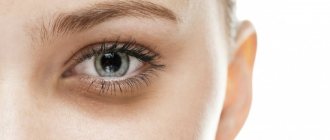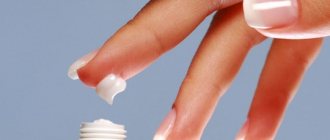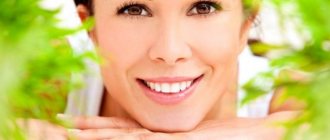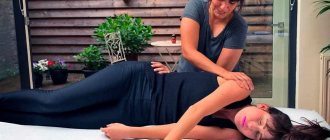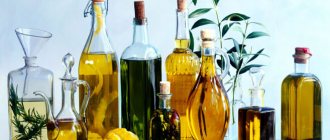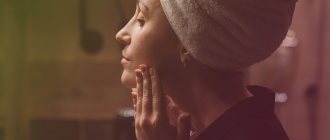In order to be beautiful, women must take care of the freshness and youth of their facial skin. There are various techniques to help keep it in good condition: both traditional and a little unusual. The latter include hirudotherapy, which is a system of influencing the body with leeches specially designed for this purpose. Initially, this type of annelid was used primarily as a remedy. Indications for hirudotherapy include cardiovascular, nervous diseases (sleep disorders, migraines, radiculitis, neuritis, neuralgia of various origins, neuroses and autonomic disorders), diseases of the spine and joints, etc. But recently, the so-called hirudocosmetology, which deals with skin problems, including those associated with age-related changes, has become increasingly popular. To date, the effectiveness of leeches in the fight against wrinkles and other signs of aging has been proven by numerous positive reviews.
The principle of action of leeches against wrinkles on the face
The glands of medicinal leeches secrete compounds that are ideal for use in cosmetology. They improve skin structure, microcirculation, local blood circulation, increase its elasticity and oxygenation (oxygen saturation). Hyaluronidase and collagenase elastase, components of leech saliva, act as agents that reduce tension and enhance the penetration of other compounds from the salivary glands into the skin tissue. A substance similar to histamine dilates blood vessels, increasing local blood circulation.
Medical leech (Hirudo medicinalis) is a type of annelid worm used in medicine and cosmetology.
Today, there are ointments and creams on the market with active extracts of leeches, but they cannot replace the natural enzyme hirudin, which penetrates into the blood only during a hirudotherapy session.
Along with anticoagulants, lipids and proteins also enter the skin as part of a powerful group of salivary compounds. The largest group is formed by phosphatidic acids and free fatty acids. Along with lipids, enzymes are released, such as phospholipases and lipases, which play an important role in the restoration of phospholipid membranes of skin cells and have a therapeutic and protective effect during the healing of wounds after leeching, which extends to surrounding tissues.
The therapeutic effect of a hirudotherapy session acts in 3 directions:
- reflex - medical leeches are placed on the skin of the face not randomly, but in the area of biologically active points, or so-called points of youth, corresponding to the projections of internal organs responsible for blood supply and microcirculation;
- mechanical - when feeding, leeches act similar to the method of therapeutic bloodletting, unloading the blood flow and stimulating the production of new blood cells; as a “side effect”, blood pressure is normalized and the work of the heart muscle is facilitated;
- biological - it contains the main therapeutic and rejuvenating effect - the release of the unique secretion of hiruda, which contains a lot of natural biologically active substances.
Indications for the use of hirudotherapy in cosmetology
Treatment of cosmetic skin defects, including the first signs of aging, has no age restrictions. Anyone can enjoy the benefits of hirudotherapy for facial rejuvenation, regardless of gender. The use of leeches in cosmetology helps reduce or eliminate defects such as:
- unsatisfactory cosmetic condition of the skin (tired appearance and dull complexion, swelling, the first signs of age and photoaging);
- deformation of the oval face, double chin, drooping eyelids;
- early small wrinkles in the eye area, upper lip;
- spider veins (telangiectasia);
- hyperpigmentation.
Today, hirudotherapy is widely used in plastic surgery to improve blood circulation in a skin graft or other defects resulting from corrective surgery.
At the same time, the overall condition of the skin will significantly improve and defects such as:
- scars from acne, post-acne rash (post-acne);
- acne and pustular diseases;
- some dermatological diseases, including those of an autoimmune nature (atopic eczema/dermatitis syndrome, psoriasis).
Efficacy of therapy
The benefits of leeches in medicine are also undeniable. They are used to implant complex skin implants and grafts. They stick to the skin of their victims using a suction cup. After 20-45 minutes of rest on the skin, they come off on their own, which is a sign of saturation with blood. Indeed, in some cases, the implanted skin or meat flap does not have the ability to control the inflow and outflow of blood, which leads to the destruction of the graft.
- establish the sucking pathway (degradation of the extracellular matrix);
- inhibit (delay) adhesion, aggregation and coagulation (inhibition of platelet functions);
- improve blood circulation;
- enhance antimicrobial activity;
- provide analgesic and anti-inflammatory effects.
How does a hirudotherapy session work?
Before prescribing hirudotherapy, the doctor examines the face to make sure there are no open lesions (ulcers, wounds). It is recommended to review any medications you are taking that increase the risk of bleeding or decrease the immune response. Caffeine should be avoided during and until completion of therapy to reduce the risk of vasospasm. Smoking and the use of nicotine substitutes are contraindicated during therapy due to the vasoconstrictor effects of carbon monoxide and nicotine.
Carrying out the procedure
The recommended course of rejuvenating procedures is 6–10 sessions of hirudotherapy with breaks of 3–4 days. The patient's position during the session should be as comfortable as possible for a comfortable stay for an hour. The algorithm of actions of a hirudotherapist is approximately as follows:
- Before applying the leech, the skin is washed with neutral soap and rinsed with sterilized water. Wipe dry.
- The therapist wears medical gloves and uses a pair of long, non-toothed forceps to remove the leech from its container. This is easier to do immediately after removing the container from the refrigerator, when the leeches are relatively docile.
- Then the leech is placed in a 5 cm plastic syringe (with the tip previously removed) and inverted over the treatment site.
- When the leech has attached itself, the syringe can be removed. To prevent the leech from moving and to calm the patient, you can use a soaked cotton ball and place it under the leech's body.
The leech is planted on a specific area of the face using a plastic syringe
If problems arise with attachment, the doctor may make a small puncture of the skin. The released drop of blood will stimulate the attachment of the geruda. The medicinal leech has three jaws with tiny teeth, with which it pierces the human skin and injects its own saliva, which has a healing effect. After the leech has finally attached and the sucking process has begun, the patient may feel a slight local burning sensation similar to a nettle burn. But after a few minutes, the natural pain-relieving components of saliva begin to act and the discomfort stops.
The leech releases about 60–70% of its medicinal substances in the first 10–15 minutes of the session. But in order for the patient to receive the full dose of enzymes, the procedure should last about 45 minutes. During this time, one leech manages to suck up to 15 ml of blood, after which it independently detaches from the wound. In case of reluctant detachment of the leech, use a 5% solution of benzoylecgonine externally to paralyze. Forced removal of a creature with tongs is never used.
A persistent reluctance of a leech to attach or detach indicates dying tissue or insufficient tissue nutrition.
Bite wounds will bleed for up to 10 hours after completion of the session, which is normal after the administration of hirudin, which has a blood thinning effect. During this time, the skin should be regularly washed with a disinfectant solution or protected by applying an aseptic dressing. After a few days, the wounds gradually close and then disappear without a trace, leaving no marks or scars.
Leeches should never be used repeatedly, even on the same patient, to avoid the transmission of bloodborne infections. After one-time use, leeches are disposed of as biohazardous waste. They are destroyed by immersing them in a 7% ethanol solution for five minutes before euthanizing them with 70% ethanol alcohol.
Indications for treatment
- Chronic skin diseases such as scabies, psoriasis, eczematous dermatitis, chronic ulcers, reddish freckles and favus;
- Phlebitis and thrombotic conditions;
- Coronary artery thrombosis and coronary heart disease;
- Wounds. Wound care and healing of severed limbs such as fingers, toes and ears;
- Pain and inflammation of the tissue. To relieve pain and reduce inflammation in conditions such as osteoarthritis;
- Asthma, acute nasopharyngitis (nasopharynx) and spasmodic runny nose;
- Hematoma;
- Gum disease;
- Hypertension, migraine, phlebitis, varicose veins, arthritis, hemorrhoids, ovarian cyst.
The duration of the course of treatment depends on the existing problem, sometimes 1 session is enough for the sake of prevention. After each session, it is recommended to take a break of 3 to 7 days. The frequency of repetitions is considered individually.
Possibilities of hirudotherapy in cosmetology
The complex therapeutic effect of using leeches on the face is externally noticeable after 1–2 sessions. Hirudotherapy helps smooth out wrinkles on the face, eliminate bags under the eyes and general swelling (pasty), reduce fat deposits in the form of a double chin, and get rid of unsightly age spots. The tone and elasticity of the facial skin increases, a healthy color and natural glow appear.
Hirudotherapy is a natural and safe way of facial rejuvenation
Recommendations after the procedure
At the end of the hirudotherapy session, the patient should be provided with peace; in order to avoid dizziness, one should not get up immediately.
In the first days, to prevent the development of infectious processes and edema, the patient should not:
- comb the wound;
- rub it with a washcloth;
- take a shower;
- visit the pool, sauna;
- exercise and go to the gym.
Eating iron-rich foods that stimulate hemoglobin synthesis will help the body recover after bloodletting. The diet should include buckwheat, beets, liver, apples, pomegranate juice, and halva.
Using leeches at home
Experts, as a rule, recommend resorting to the services of professional hirudotherapists, who know many of the nuances and subtleties of the procedure. However, if you have certain knowledge and experience, for example, having undergone a course of hirudotherapy from a specialist in the past, you can try to conduct a rejuvenation session yourself at home. In this case, a preliminary consultation with the attending physician is required to exclude contraindications to the procedure. It is better to purchase leeches for home use in specialized pharmacies, which guarantees their safety.
It is first recommended to familiarize yourself with the classic options for applying them to the face for the purpose of a rejuvenating effect. However, it may turn out that using this therapeutic method on your own face is not very convenient. In addition, hirudotherapists categorically do not recommend installing leeches on the area around the eyes yourself. It is important to avoid areas where large arteries or veins anatomically pass. This procedure requires a reserve of patience and the development of the appropriate skill, which comes with experience. Therefore, it is recommended to start with 1–2 leeches, gradually increasing their number to a maximum of 5–7.
Cosmetologists' opinion
Many cosmetologists have a positive attitude towards hirudotherapy. After a course of procedures, the supply of oxygen to tissues significantly improves, and this has the most positive effect on appearance.
However, you also need to remember to be careful. Under no circumstances should you try to carry out the procedure yourself or trust a person with dubious qualifications.
It is important that the sessions are conducted by a specialist with experience. In addition, you must be patient and complete the full course; if you do a couple of procedures and refuse further sessions, you should not expect a noticeable rejuvenation effect.
Contraindications and possible consequences of leech bites
Like any therapeutic procedure, hirudotherapy has its limitations. Contraindications to the use of the method include:
- blood clotting disorders (thrombocytopenia, hemophilia);
- postoperative period, when the risk of bleeding is increased;
- tumor process of a malignant nature (any localization);
- anemia with a hemoglobin level below 110 g/l;
- hypersensitivity reaction to one of the components of leech secretion;
- abnormally low blood pressure;
- acute inflammatory process in the body;
- chronic fatigue and physical exhaustion;
- pregnancy;
- toxicosis.
The bacterium Aerophonas hydrophilia lives in the intestines of the medicinal leech, which can pose an infectious threat to patients with weakened immune systems.
The leech's intestines contain the bacterium Aerophonas hydrophilia, which plays an important role in the digestion of the annelid. The presence of these bacteria may cause or complicate local or systemic infections, which should be considered before initiating therapy. A fifth of patients may develop infectious complications if they do not receive prophylactic antibiotics. Aeromonas hydrophilia is usually sensitive to second and third generation cephalosporins, Chloramphenicol, aminoglycosides, fluoroquinolones and Trimethoprim. Penicillins and first-generation cephalosporins are ineffective against this microorganism.
What are these creatures?
Previously, leeches were found everywhere - in swamps, in reservoirs, and were not a curiosity to anyone.
Today, the number of these creatures has decreased significantly, and not everyone has seen them in their natural form.
Despite the fact that leeches live in the aquatic environment, no one specifically catches them for use for cosmetic purposes, since creatures bred artificially in laboratory conditions are used for this.
Leeches belong to the class of annelids. These representatives have a rounded-elongated body, slightly flattened on the sides.
It is crowned with suckers at both ends: the anterior nipple is equipped with a sucking cavity.
These individuals are extremely voracious. In a hungry state, they weigh no more than 2 grams, and after drinking blood, they increase 10 times.
Advantages and disadvantages of hirudotherapy over other types of rejuvenation
One of the main advantages of the method is the absence of significant side effects on the body, as from the use of any chemical or medicinal anti-aging procedures. A bonus to natural rejuvenation are anti-inflammatory and immunostimulating effects, normalization of fat metabolism in problem areas of the face and neck.
The disadvantages include:
- increased risk of bleeding as a result of administration of the blood-thinning enzyme hirudin;
- the possibility of infectious infection, which is important in the case of using not pharmaceutical artificially grown leeches, but worms from the wild.
Provided that basic safety measures are observed, taking into account individual contraindications, a hirudotherapy session is an absolutely reliable procedure.
Necessary Precautions
It is mandatory to follow certain safety rules when conducting gyroduplasty sessions:
- They do not make any effort to detach the leech - once it is satiated, it spontaneously falls off. This usually takes no more than an hour.
- Do not take any action to stop bleeding from wounds if it lasts less than 2 days. This is a natural phenomenon.
- The crusts that subsequently form on the skin are not picked, but wait for them to heal naturally. During this time, try to take baths less often.
- Leeches are used only once and then destroyed.
Myths and reality of hirudotherapy
Most people tend to go to extremes: they either overestimate the expected effect of hirudotherapy, or, on the contrary, deny possible positive changes in facial appearance from the effects of leeches. Below are some of the most popular myths regarding the procedure:
- Any defect or age-related changes in the skin can be eliminated with the help of a course (or several) of hirudotherapy. Such reasoning is incorrect. Many processes and diseases occurring in the body are genetically programmed or caused by a deficiency of certain microelements or other nutrients in the blood. In this case, the action of hirudotherapy alone is simply not enough, and leeches can only be considered as an addition to more radical solutions, for example, plastic surgery.
- Too frequent sessions of hirudotherapy with a large number of leeches can lead to death from blood loss. In fact, it is difficult to accurately determine the maximum number of leeches that could become critical for a patient. Modern hirudotherapists say that you should not use more than 40 leeches in one session if we are talking about large areas on the body. In cosmetology, up to 10 pieces are most often used simultaneously. This amount is completely safe and does not threaten any serious blood loss. As for the optimal number of leeches in one session, expert opinions differ diametrically. Some consider it permissible to use no more than 5-7 leeches at a time, others believe that it is permissible to install up to several dozen worms at the same time. Of course, the second approach is allowed only in specialized hirudotherapy clinics. At home, it is allowed to install no more than 5–7 leeches.
Experts recommend using no more than 5–7 leeches, provided that you independently conduct a hirudotherapy session at home
- Medical leeches can be placed on any part of the face and body. According to biologists, the leech itself finds reflex points, which are the energy “points of youth.” But professional hirudotherapists refute this, claiming that a leech can attach itself to absolutely any warm place on the skin, provided there is no thick hair. They do not recommend allowing the leech to choose the location of its bite on its own. Instead, you should limit the suction radius with a syringe or glass flask, with the help of which the creature is placed on a particular area of the face or body.
- Leeches are slippery and disgusting creatures and it is very unpleasant to carry out any procedures on yourself with their help. It is difficult to argue with the fact that a leech is not as beautiful in appearance as a butterfly. It is difficult to get aesthetic pleasure from it. But you should also not expect that before the bite, the leech will crawl back and forth across your face, choosing the ideal place for “lunch.” Doctors apply leeches to certain points, preventing them from moving at all. And after the procedure, living “healers” are disposed of for safety reasons. Therefore, it is worth focusing on treatment and getting a positive result, instead of imagining unpleasant worms.
- The hirudotherapy procedure is painful. A leech bite is comparable in pain intensity to a mosquito bite. For most people this is quite tolerable. Natural anesthetics, which are also present in leech saliva, soon begin to act and the patient ceases to feel even slight discomfort.
- Any leech is suitable for use in therapy. In fact, only one type of leech is used to treat people - the medicinal leeches (Hirudina medicinalis). But even among representatives of the “right” species, finding the right specimen will not be easy. The leech should be smooth, with a flat body and a pointed head. It is desirable that it be greenish in color and always have orange stripes and black dots on the back. Any other leeches are not suitable for use in hirudotherapy.
Question answer
If the temperature does not subside, and the tumor grows at the site of the bites, causing general malaise and weakness, then you should go to the doctor. Antihistamines are mainly prescribed externally. Fenistil-gel is suitable, which is applied to problem areas. Such manifestations are not considered allergic and the procedures are not cancelled. No further complications arise. For more severe consequences (Quincke's edema, urticaria), medical intervention cannot be avoided.
You should be concerned when blood does not stop oozing for more than 2 days. This is evidence of slow blood clotting and you should consult a doctor.
They adhere to the course approach - 2 times every 7-8 days, for a month.
Reviews
I have been undergoing hirudotherapy every year for 5 years now. Every time after this I feel much lighter and younger.
laska35
https://otzovik.com/review_98338.html
If you have completed one course of hirudotherapy, then there is a 99% chance that you will want to repeat these procedures again. Before the first procedure, my veins were shaking, but in practice it turned out that it didn’t hurt at all, there wasn’t even the feeling that someone was crawling on you. The only thing is that I didn’t expect that blood would ooze out in huge quantities and that I wouldn’t get away with just a pad. But as you know, the first damn thing is lumpy. Then the process got better. Another unpleasant moment is wild itching when the wounds begin to heal. It itches so much that you want to climb the wall. Fenistil gel can help with this. Frankly, after these procedures, the skin on the whole body became smooth, and a pleasant feeling of lightness appeared throughout the body; it became easier to wake up in the morning. My husband’s bags under his eyes disappeared and he looked 10 years younger, plus he lost several kilograms after treating his liver and stomach with leeches. I have enrolled several people in hirudotherapy treatment and they are all very happy.
Bellmary
https://otzovik.com/review_690821.html
Many women face the problem of spider veins. They are caused by many reasons: hypertension, heavy physical activity, hormonal disorders, varicose veins, etc. I learned about hirudotherapy or treatment with leeches from lectures in medical school. school. Now this procedure costs 250 rubles. one point. It helps well, but is a bit expensive. So my friend and I decided to buy leeches at the pharmacy and carry out the treatment ourselves. The leeches that are sold in pharmacies are grown under artificial conditions, and they are also sterile. So, we came home and decided to place leeches in the evening; for this we needed water with sugar, tweezers and the leech itself. We lubricate the desired area with sugar syrup and hold the leech with tweezers; as soon as the leech attaches itself, the process of resorption of the star begins; together with the leech’s saliva, biologically active substances enter the bloodstream, which have a beneficial effect on the body. As soon as the leech has sucked blood, it falls off on its own, but ours did not, so we removed it ourselves, the effect is amazing. So I advise anyone who has such problems to contact the clinic and attend a series of hirudotherapy procedures. Self-medication without honey. education, it’s better not to study.
glamour83
https://otzovik.com/review_332932.html
Hirudotherapy is a specific method of rejuvenation, which, for various reasons, is not suitable for everyone. But those who have once tried the magic of these unique creatures on themselves most often resort to these procedures more than once in the future.
- Author: woman
Rate this article:
- 5
- 4
- 3
- 2
- 1
(3 votes, average: 5 out of 5)
Share with your friends!
Expert opinion
- Cosmetologist
- Surgeon
Michelle Ellern
practicing cosmetologist-dermatologist
You shouldn’t put leeches unless you really want to, if you’re squeamish. The negative experience you experience does not contribute to achieving the desired result, so there will be no benefit anyway.
Theda Contis
plastic surgeon
After removing leeches, do not scratch the itchy wounds. A jump in body temperature is likely, but this is a normal response of the body - no measures need to be taken.
Side effects
The body can react to any, even the most harmless cosmetic procedure, completely differently than expected, and hirudotherapy is no exception. Among the natural effects that may occur after using leeches, experts note:
- The presence of slight swelling and redness;
- Slight increase in body temperature (local);
- Itching;
- Enlarged lymph nodes on the head or neck.
All such symptoms are a natural reaction of the body and disappear quickly enough, therefore they do not require any intervention or additional actions. However, in rare cases, minor complications may occur, among which cosmetologists identify three possible reactions:
- General increase in body temperature (up to high values);
- Mild muscle pain;
- Weakness and dizziness;
- Bleeding from the sites where leeches are installed for a long time (more than two days);
- Infection in wounds due to improper skin care after the procedure;
- Allergic reaction.
You need to understand that this is a general list of all possible side effects and most of them can be avoided by contacting a qualified specialist.
Where to put it?
After the decision in favor of hirudotherapy is finally made, a natural question arises: “Where to put leeches on the face for wrinkles?” It all depends on the specific case.
Firstly, you should focus on those places that need to be “rejuvenated”, that is, get rid of a specific problem. It is to them that you need to direct a larger number of leeches so that the result is more noticeable. Secondly, it is necessary to take into account that the number of individuals can be practically unlimited - but for the first time, naturally, it is better to take no more than 10 pieces.
If we again consider the issue of pain in this process, it is worth noting that surgical operations that give an identical effect are much more painful. Yes, and they cost tens of times more, and this factor also adds a plus to hirudotherapy.
The question arises: where to put leeches for facial rejuvenation and how to do it correctly? It is best to use them in certain places, which are also called “biologically active zones.” In order to achieve maximum effect, the creatures must be installed behind the ears, as well as on the “collar area,” as well as directly on the area requiring rejuvenation. In addition, the distance between individual leeches (at least 1 cm from the nearest blood vessel) also plays a crucial role.
Although the above-mentioned technique is considered an innovative means of traditional medicine, like all other methods of rejuvenation, leeches for facial wrinkles still have contraindications.
This list includes:
- Various diseases that impair blood clotting;
- Noticeable exhaustion of the patient’s body;
- Heavy bleeding;
- Pregnancy period;
- Low blood pressure;
- Oncological diseases;
- The presence of anemia (with low hemoglobin);
- Individual psychological intolerance to such procedures;
- Allergy to a specific enzyme of the same leeches (an extremely rare case).
The undeniable advantages of this process include:
- significant improvement in blood microcirculation;
- reduction of existing edema;
- complete restoration of immunity;
- getting rid of all kinds of inflammation;
- improving the tone of facial muscles;
- smoothing out both small and deeper wrinkles;
- disappearance of small scars and scars;
- normalization of complexion.
Any “hirudotherapy” procedure, regardless of whether it is therapeutic or only cosmetic in nature, must be performed exclusively by a qualified doctor with the required experience. If the process is performed independently, it is strongly recommended to select a small area of skin for it, which does not catch the eye.
This will allow you to look at the reaction of your own body and save a person from a lot of troubles.
It is also important that the patient feels the effect of treatment almost immediately.
Conclusion
Hirudotherapy is the treatment of various diseases using medicinal leeches. Girud is the scientific name of the medicinal species. If your hematopoietic organs work normally, such losses do not pose a threat to the body.
You should know that they suck out stagnant blood, which is already saturated with harmful decomposition products. Removing such fluid helps the body establish normal blood supply to the affected tissues and organs.
During therapy, the patient must be under constant medical supervision, since the “little animal” can independently move to another place if used uncontrolled. Be careful, take care of your health!
Subscribe to my blog and you will never miss new articles dedicated to the beauty and health of your face!
Possible complications
Hirudotherapy in cosmetology, despite all the advantages, can cause various complications, including:
| Complication | Manifestation |
| Allergy | skin rash, itching, swelling, spasm of the respiratory system, less commonly anaphylactic shock |
| Large hemorrhages under the skin | appear if leeches are placed on thin and sensitive skin (near the eyelid) or on a vessel |
| Infection | occurs more often when using low-quality leeches or not properly caring for the wound |
| Enlarged lymph nodes | Leeches contain the enzyme “hyaluronidase”, which often “reveals” hidden foci of infection. If a person suffers from hidden diseases, it is quite possible that after a hirudotherapy session the lymphatic system will react acutely, which will provoke inflammation of the lymph nodes. |
Complications after treatment with leeches often develop against the background of an incorrectly performed procedure or negligent attitude towards hygiene and care of the wound itself.
Hirudotherapy in cosmetology is popular, but many do not dare to overcome the psychological barrier, so they refuse this method of rejuvenation. However, many women who decided to undergo hirudoplasty were satisfied with the result.
